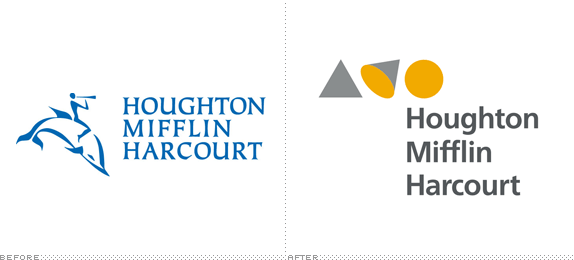
Established in 1880 and selling educational materials since the 1890s, Houghton Mifflin Harcourt (HMH) today is one of the leading and the world's largest providers of pre-K-12 education solutions and one of the longest-established publishing houses. Further official description: "HMH's interactive, results-driven education solutions are utilized by 60 million students in 120 countries, and its renowned and awarded novels, non-fiction, children's books and reference works are enjoyed by readers throughout the world." Today, HMH introduced a new identity designed by New York, NY-based Lippincott.
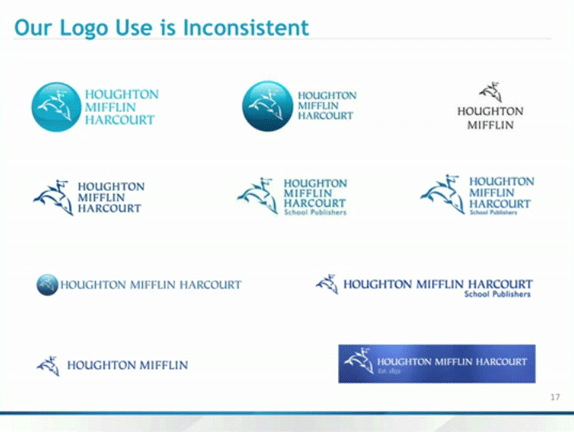
Existing range of logos. It's actually not that bad.
As we change, our brand needs to evolve as well. We must signal to the market that HMH reflects one company, one voice, one future.
Over the past six months, our strategic brand partner, Lippincott, has worked with us to develop a unifying strategic brand architecture, an updated identity system with new digital properties, and most importantly, a brand story that integrates HMH's rich past, current capabilities, and future aspirations--all in a way that speaks to our mission of fostering passionate, curious learners.
Our brand is intended to clarify our common purpose, define our space and capabilities, appeal to a broader audience, and signal a bold, confident future. It demonstrates our commitment to lifelong learning and reflects the collaborative and unique way we make learning more engaging and effective. I am confident that our new brand will inspire curiosity in us all.
— Provided release
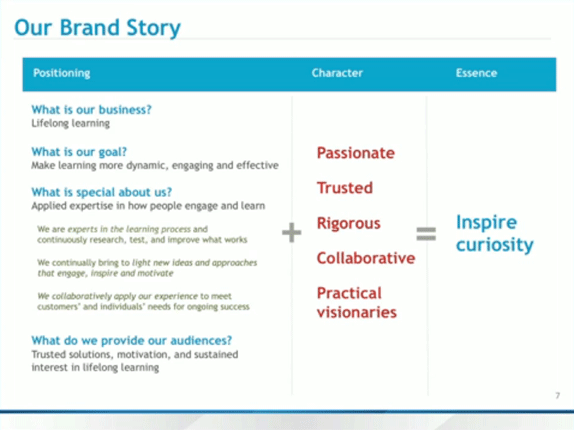
Key slide and message: "Inspire curiosity".
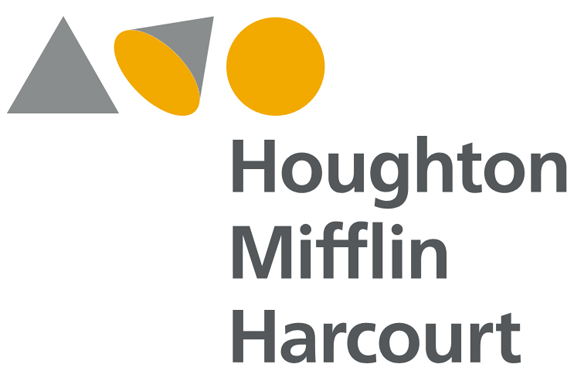

Full-color and single-color logos.
Logo animation.
The old logo was pretty good, in that old-school publisher kind of way, with an iconic boy riding on a dolphin as recognizable as other book industry, animal-based logos like Alfred A. Knopf's dog or Penguin's penguin. The icon and the typography meshed well with their angled edges and rough finish. So why change, right? Well, apparently, HMH has gone through some management, debt, and "balance sheet" issues since 2009 and things finally seem to be in order so it's, pardon the pun, a textbook case to signal change through a new identity and positioning.
Based on the brand's essence, "Inspire curiosity", the new logo is a great play on it, showing a triangle that, unless you were curious, you would never think of picking up and rotating it to reveal that it's not just a triangle but a cone and that by changing its position and point of view it turns into a completely different primary shape. It's perhaps a very literal logo and at first glance it's kind of weird to see the three shapes there but the payoff of trying to understand it is rewarding. It's no arrow-in-the-FedEx-logo kind of reveal, but it requires more power of deduction than a boy riding on a dolphin. I really like the icon, especially when you consider a couple of their main audiences are children and educators — the primary shapes are a perfect metaphor. The typography is as exciting as the clothing choices of your average history teacher and perhaps skew too much to the corporate side of things, making the logo look more like that of a law firm than a publisher. In application, not much happens. Just the logo in an appropriate corner and a nice use of yellow and dark gray; nothing exciting but nothing offensive either. Overall, I think it's a bold change that risks alienating anyone with an attachment to the old logo but who might also be clinging on to a book industry of yore and not acknowledging the demands put on a large business in the twenty-first century.
Very in-depth explanation about the rebranding. If you haven't experienced how big identity consulting firms and large clients talk about rebranding, this is a great primer.
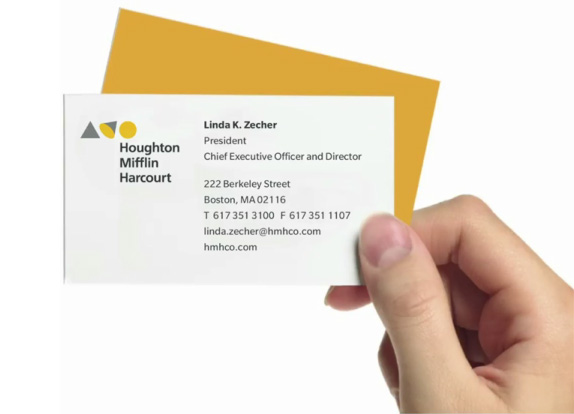
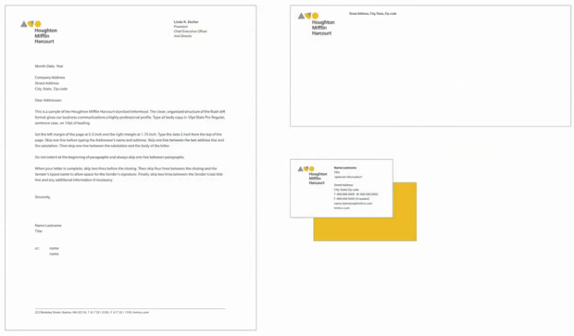
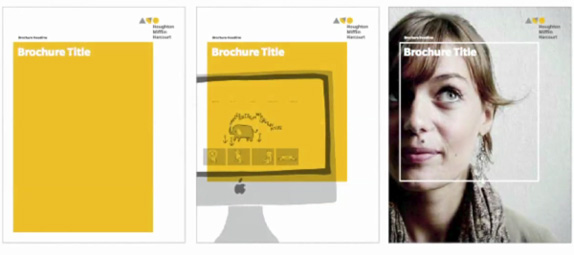
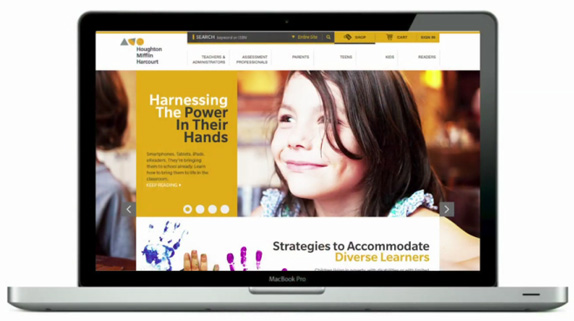
Thanks to Wayne Burrow for first tip.

Don't forget to cast your vote about this post online
